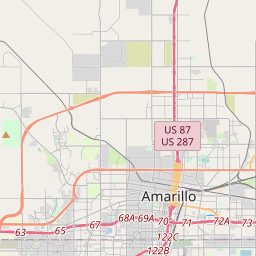Site of Significant Archaeological Find, American Mammoths
Historical marker location:






When this Santa Fe Railway general office building was erected in 1928, the remains of a mammoth were excavated from the basement and were placed in the Panhandle Plains Historical Museum, Canyon, Texas.
The extinct American mammoths were closely related to the modern elephants of Africa and Asia. They migrated from Asia into America early in the Pleistocene Epoch, or Ice Ages, more than 1,000,000 years ago. They thrived on this continent until the end of that epoch, when they disappeared, along with many other ice age animals such as the giant bison ground sloth, horse, camel, and other lesser animals. The causes of this extinction are still being investigated.
There were several species of mammoths, some of them much larger than modern elephants. Remains of mammoths are so abundant in Pleistocene deposits of the Texas Panhandle that they serve as "Index Fossils" for beds of that age. Early inhabitants of North America, such as men of the Clovis Culture (circa 12,000 to 15,000 years ago), pursued the mammoth as a means of subsistence.
Preservation of history is a policy of the Santa Fe Railway System. See exhibit, foyer of this building.
(1966)
As one of the most visible programs of the Texas Historical Commission (THC), historical markers commemorate diverse topics in Texas history, including: the history and architecture of houses, commercial and public buildings, religious congregations, and military sites; events that changed the course of local and state history; and individuals who have made lasting contributions to the state, community organizations, and businesses.
Texas is known for its barbecue, and one of the most famous barbecue restaurants in the state is Kreuz Market in Lockhart. The restaurant has been in operation since 1900 and is still family-owned.
In 1876, Potter County was officially established and named after Robert Potter, a lawyer and signer of the Texas Declaration of Independence. The county's first town, Amarillo, was founded soon after and quickly became the county seat. Initially, Amarillo served as a cattle shipping point and a center for trade, attracting businesses and settlers from surrounding areas.
The early 20th century brought significant development to Potter County. The discovery of oil in nearby areas in the 1920s led to a boom in the county, with oil companies setting up operations and bringing wealth and jobs to the region. This growth and prosperity continued throughout the 20th century, with Amarillo becoming a major economic and cultural hub in the Texas Panhandle.
Today, Potter County continues to thrive as a vibrant community. Its economy is diversified, with significant contributions from industries such as healthcare, education, agriculture, and tourism. The county boasts numerous parks, museums, and attractions, making it an attractive destination for visitors. With its rich history and ongoing growth, Potter County remains a significant contributor to the heritage and economy of Texas.
Potter County Timeline
This timeline provides a glimpse into the major events and milestones that have shaped the history of Potter County, Texas.
- Potter County is formed on August 21, 1876
- In 1886, Amarillo becomes the county seat of Potter County
- The first courthouse in Potter County is built in 1887
- The first oil well is drilled in Potter County in 1921
- Potter County experiences significant growth during the oil boom of the 1920s
- Palo Duro Canyon State Park is established in Potter County in 1934
- In 1951, the Pantex Plant is established in Potter County, becoming a key facility for the assembly and disassembly of nuclear weapons
- The Tri-State Fair & Rodeo, held annually in Potter County, celebrates its 100th anniversary in 2021